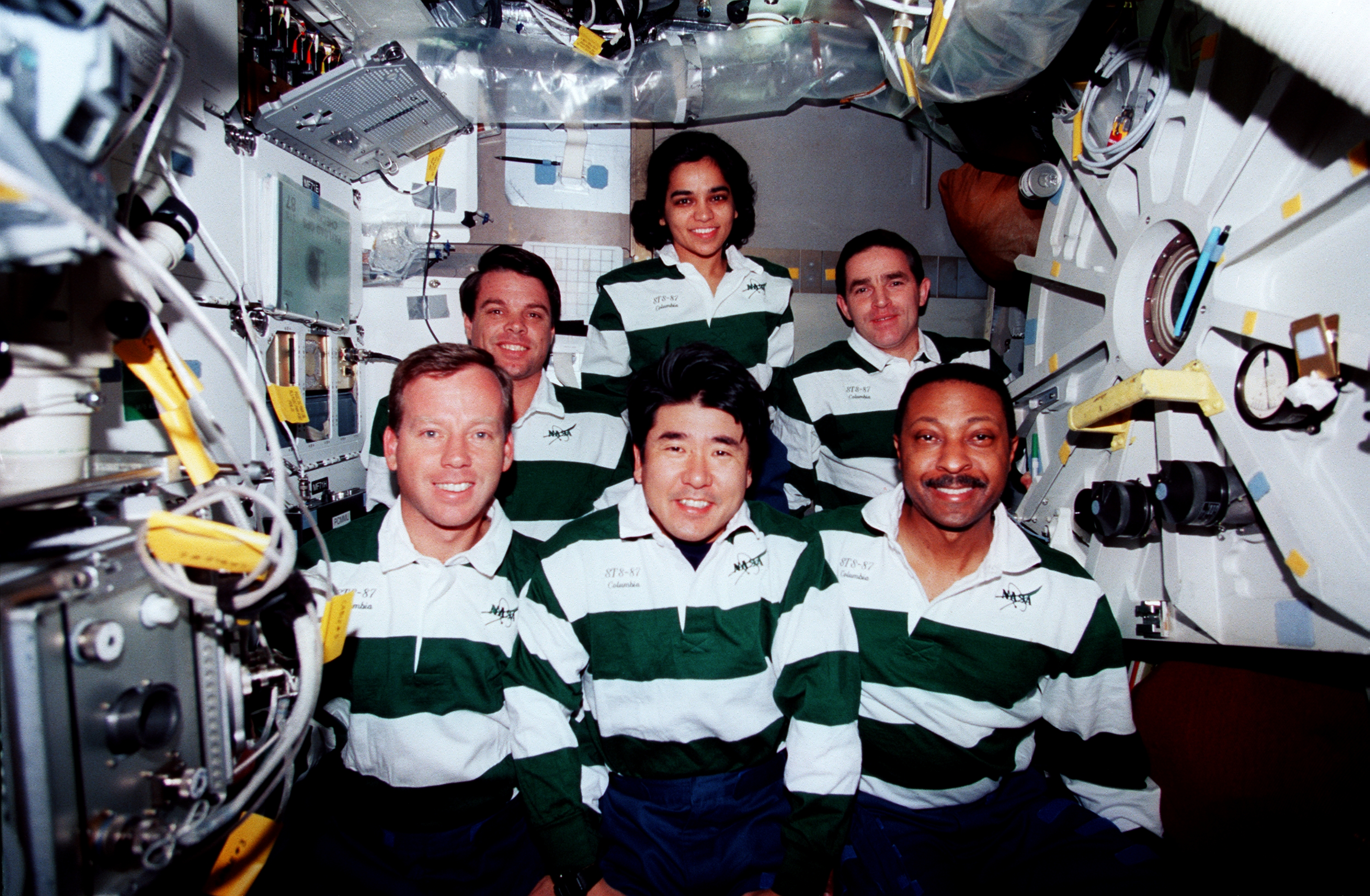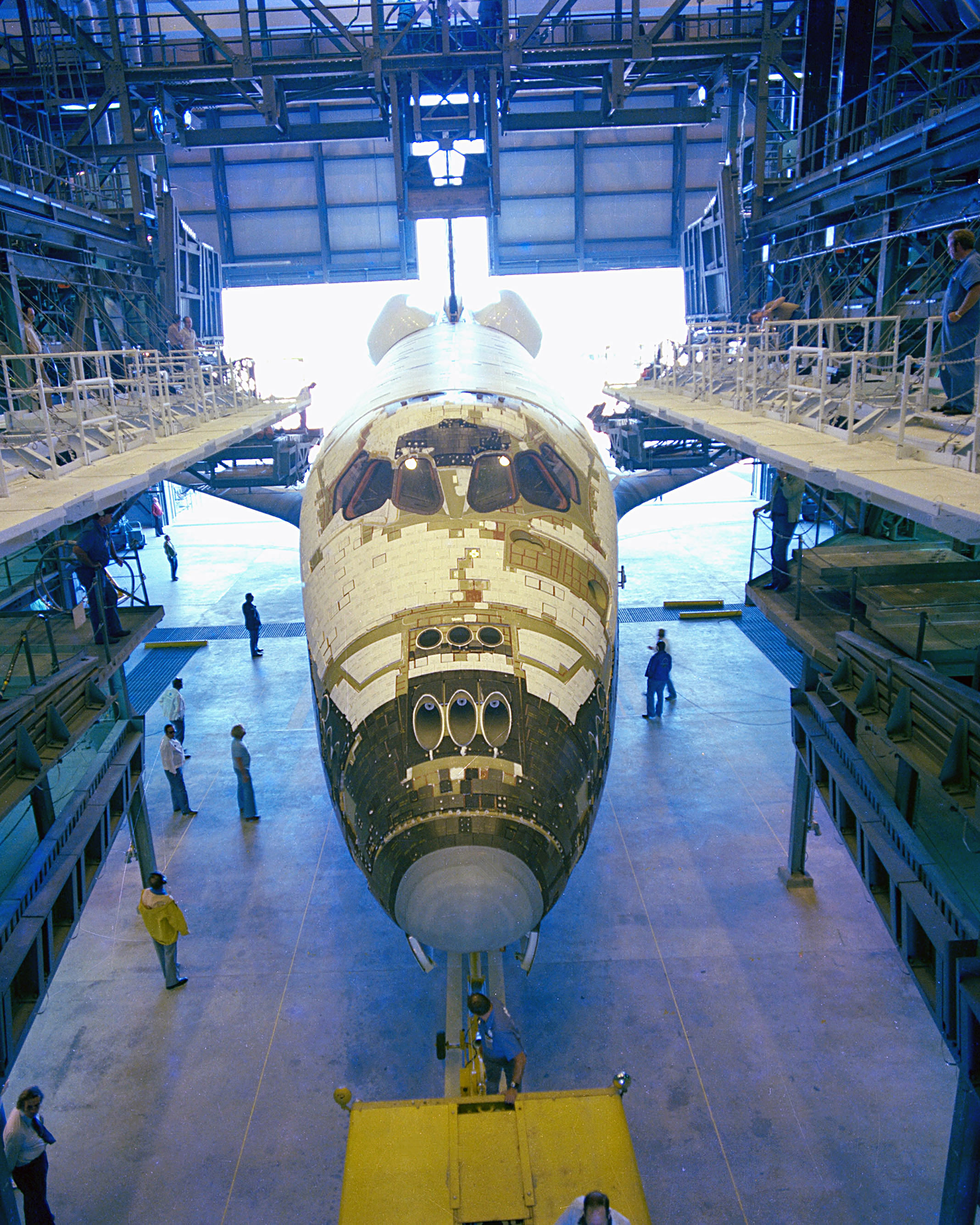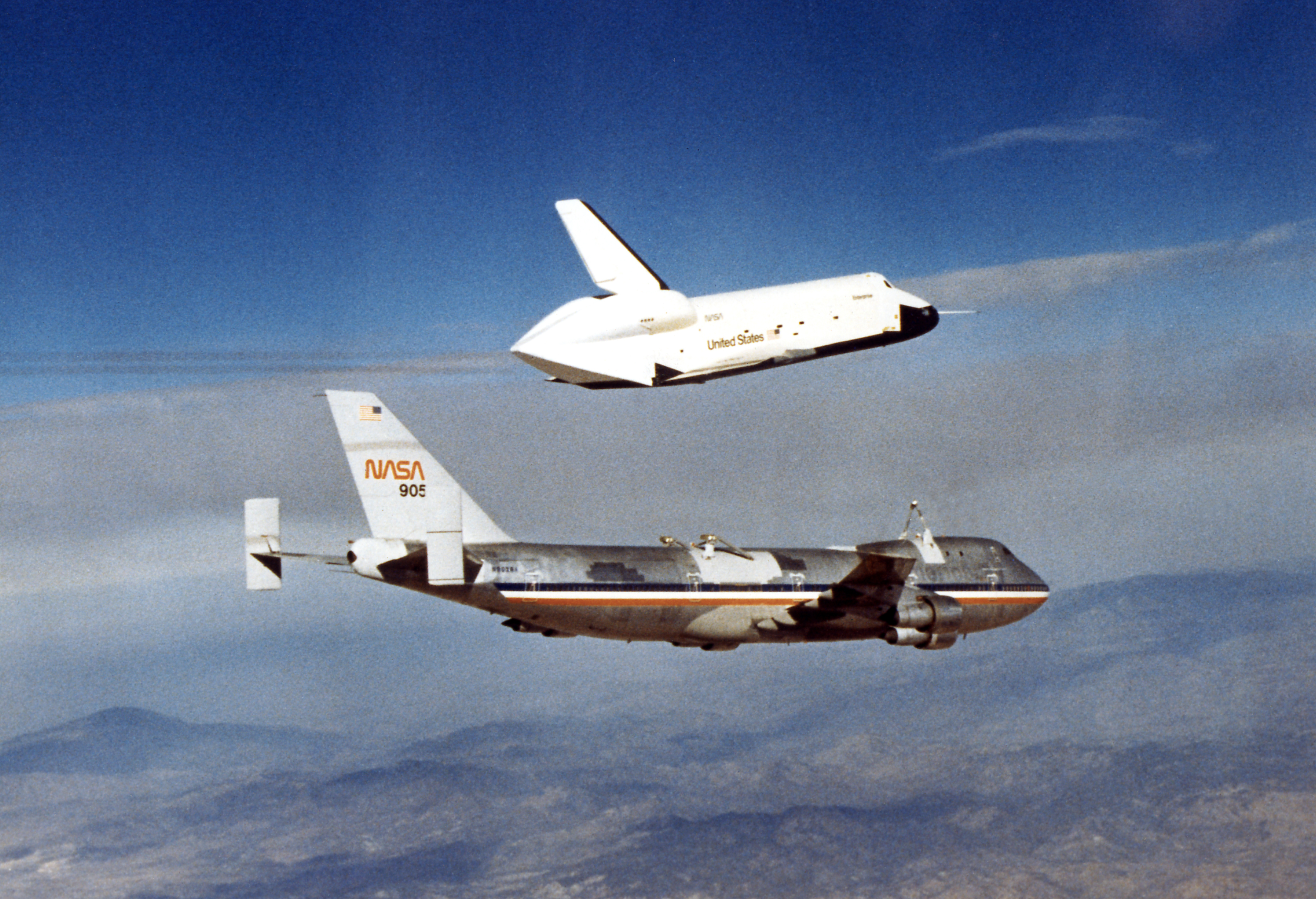|
STS-87
STS-87 was a Space Shuttle mission launched from Launch Complex 39B of the Kennedy Space Center on 19 November 1997. It was the 88th flight of the Space Shuttle and the 24th flight of '' Columbia''. The mission goals were to conduct experiments using the United States Microgravity Payload (USMP-4), conduct two EVAs, and deploy the SPARTAN-201 experiment. This mission marked the first time an EVA was performed from ''Columbia''. EVAs from ''Columbia'' were originally planned for STS-5 in 1982 and STS-80 in 1996, but were canceled due to spacesuit and airlock problems, respectively. It also marked the first EVA conducted by a Japanese astronaut, Takao Doi. Crew Backup crew Space walks *'' Scott and Doi'' – EVA 1 *EVA 1 Start: 25 November 1997 – 00:02 UTC *EVA 1 End: 25 November 1997 – 07:45 UTC *Duration: 7 hours, 43 minutes *'' Scott and Doi'' – EVA 2 *EVA 2 Start: 3 December 1997 – 09:09 UTC *EVA 2 End: 3 December 1997 – 14:09 UTC *Duration: 4 hours, 59 minutes ... [...More Info...] [...Related Items...] OR: [Wikipedia] [Google] [Baidu] |
STS-87 Launch
STS-87 was a Space Shuttle mission launched from Launch Complex 39B of the Kennedy Space Center on 19 November 1997. It was the 88th flight of the Space Shuttle and the 24th flight of ''Space Shuttle Columbia, Columbia''. The mission goals were to conduct experiments using the United States Microgravity Payload (USMP-4), conduct two Extra-vehicular activity, EVAs, and deploy the Shuttle Point Autonomous Research Tool for Astronomy, SPARTAN-201 experiment. This mission marked the first time an EVA was performed from ''Columbia''. EVAs from ''Columbia'' were originally planned for STS-5 in 1982 and STS-80 in 1996, but were canceled due to spacesuit and airlock problems, respectively. It also marked the first EVA conducted by a Japanese astronaut, Takao Doi. Crew Backup crew Space walks *'' Scott and Doi'' – EVA 1 *EVA 1 Start: 25 November 1997 – 00:02 UTC *EVA 1 End: 25 November 1997 – 07:45 UTC *Duration: 7 hours, 43 minutes *'' Scott and Doi'' – EVA 2 *EVA 2 Start: 3 ... [...More Info...] [...Related Items...] OR: [Wikipedia] [Google] [Baidu] |
Kalpana Chawla
Kalpana Chawla (March 17, 1962 – February 1, 2003) was an American astronaut and aerospace engineer who was the first woman of Indian origin to fly to space. Chawla expressed an interest in aerospace engineering from an early age and took engineering classes at Dayal Singh College and Punjab Engineering College in India. She then traveled to the United States, where she earned her MSc and PhD, becoming a naturalized United States citizen in the early 1990s. She first flew on the Space Shuttle Columbia, Space Shuttle ''Columbia'' in 1997 as a mission specialist and robotic arm operator aboard STS-87. Her role in the flight caused some controversy due to the failed deployment of the Shuttle-Pointed Autonomous Research Tool for Astronomy ("Spartan") module. Chawla's second flight was in 2003 on STS-107, the final flight of ''Columbia''. She was one of the seven crew members who died in the Space Shuttle Columbia disaster, Space Shuttle ''Columbia'' disaster when the spacecraft dis ... [...More Info...] [...Related Items...] OR: [Wikipedia] [Google] [Baidu] |
Leonid Kadeniuk
Leonid Kostyantynovych Kadenyuk (, 28 January 1951 – 31 January 2018) was the first astronaut of independent Ukraine to fly into outer space. In 1997, he flew on NASA's Space Shuttle Columbia, Space Shuttle ''Columbia'' as part of the international mission STS-87. Kadenyuk held the rank of major general in the Ukrainian Air Force. He was Deputy of Ukraine of the 4th convocation, adviser to the Prime Minister of Ukraine, Chairman of the State Space Agency of Ukraine, and Honorary degree, Honorary Doctor of Chernivtsi University, Chernivtsi National University. From 2015 until his death, he served as president of the Aerospace Society of Ukraine. Designated a Hero of Ukraine in December 1999, he is the namesake of the Chernivtsi International Airport, Chernivtsi Leonid Kadenyuk International Airport. Life Early life and education Leonid Kadenyuk was born on 28 January 1951 in the village of Klishkivtsi in the Khotyn Raion of the Chernivtsi Oblast in Ukraine, to ... [...More Info...] [...Related Items...] OR: [Wikipedia] [Google] [Baidu] |
AERCam Sprint
The Autonomous Extravehicular Activity Robotic Camera Sprint (AERCam Sprint) is a National Aeronautics and Space Administration, NASA experiment to demonstrate the use of a prototype free-flying television camera. It was tested on STS-87 and could also be used for remote inspections of the exterior of the International Space Station. The AERCam Sprint free-flyer is a , 35-pound (16 kg) sphere that contains two television cameras, an avionics system and 12 small nitrogen gas-powered Spacecraft propulsion, thrusters. The sphere, which looks like an oversized soccer ball, was released by Mission Specialist Winston E. Scott during the STS-87 spacewalk and flew freely in the forward cargo bay for about 30 minutes. The free-flyer was remotely controlled by Pilot Steven W. Lindsey from the Shuttle's aft flight deck using a hand controller, two laptop computers and a window-mounted antenna. The AERCam is designed to fly very slowly at a rate of less than one-quarter of a foot per second. Re ... [...More Info...] [...Related Items...] OR: [Wikipedia] [Google] [Baidu] |
Takao Doi
is a Japanese astronaut, engineer and veteran of two NASA Space Shuttle missions. Early life and education Doi holds a doctorate from the University of Tokyo in aerospace engineering, and has studied and published in the fields of propulsion systems and microgravity technology. He researched at the Institute of Space and Astronautical Science and was selected by NASDA as an astronaut candidate in 1985 for the Japanese crewed space program while also conducting research in the United States at NASA's Lewis Research Center and the University of Colorado at Boulder. Doi flew as a mission specialist aboard STS-87 in 1997, during which he became the first Japanese astronaut to conduct a spacewalk. He received a Ph.D. in 1983 from the University of Tokyo, and also a PhD in Astronomy from Rice University in 2004. As an avid amateur astronomer, he discovered supernovae SN 2002gw and SN 2007aa. Astronaut career Takao Doi visited the International Space Station in March 2008 as a ... [...More Info...] [...Related Items...] OR: [Wikipedia] [Google] [Baidu] |
Yaroslav Pustovyi
Yaroslav "Yarko" Pustovyi (; born 29 December 1970) is a former Ukrainian astronaut and Canadian businessman. Pustovyi was one of the first astronauts selected by the State Space Agency of Ukraine in 1996. Although he was a backup payload specialist on the 1997 NASA space mission STS-87, he did not fly on the mission. Pustovyi was awarded the Order of Merit for Ukraine in 1998 and competed for the Ansari X Prize in 2003 on the Canadian Arrow team. Early life and education On 29 December 1970, Pustovyi was born in Kostroma, Russia and grew up in Kyiv, Ukraine. For his post-secondary education, he graduated from the A.F. Mozhaysky Military-Space Academy in 1993 with a Master of Science. Specializing in radio science, Pustovyi additionally earned a Doctor of Philosophy from the National University of Kharkiv in 1997. Career Pustovyi started his career as a first lieutenant in the Ukrainian Air Force during the 1990s. While attending university at Kharkiv, he worked at the Nationa ... [...More Info...] [...Related Items...] OR: [Wikipedia] [Google] [Baidu] |
Space Shuttle Columbia
Space Shuttle ''Columbia'' (OV-102) was a Space Shuttle orbiter manufactured by Rockwell International and operated by NASA. Named after the Columbia Rediviva, first American ship to circumnavigate the globe, and the Columbia (personification), female personification of the United States, ''Columbia'' was the first of five Space Shuttle orbiters to fly in space, debuting the Space Shuttle, Space Shuttle launch vehicle on STS-1, its maiden flight on April 12, 1981 and becoming the first spacecraft to be re-used after its first flight when it launched on STS-2 on November 12, 1981. As only the second full-scale orbiter to be manufactured after the Approach and Landing Tests, Approach and Landing Test vehicle ''Space Shuttle Enterprise, Enterprise'', ''Columbia'' retained unique external and internal features compared to later orbiters, such as test instrumentation and distinctive black Chine (aeronautics), chines. In addition to a heavier aft fuselage and the retention of an inter ... [...More Info...] [...Related Items...] OR: [Wikipedia] [Google] [Baidu] |
STS-89
STS-89 was a Space Shuttle mission to the ''Mir'' space station flown by Space Shuttle Space Shuttle Endeavour, ''Endeavour'', and launched from Kennedy Space Center, Florida on 22 January 1998. Crew Crew notes STS-89 was originally scheduled to return Wendy B. Lawrence but returned David A. Wolf (Mir 24–25/STS-86) and left Andrew Thomas on Mir. Thomas returned on STS-91. Crew seat assignments Mission highlights STS-89 launched on January 22, 1998 and was the eighth of nine planned missions to Mir and the fifth involving an exchange of U.S. astronauts. Astronaut David Wolf (astronaut), David Wolf, who had been on Mir since late September 1997, was replaced by Astronaut Andy Thomas, Andrew Thomas. Thomas spent approximately 4 months on the orbiting Russian facility before returning to Earth when Space Shuttle Discovery, ''Discovery'' docked to Mir in late May during STS-91. During the mission, more than of experiments, supplies and hardware were transferred between th ... [...More Info...] [...Related Items...] OR: [Wikipedia] [Google] [Baidu] |
STS-86
STS-86 was a Space Shuttle ''Atlantis'' mission to the ''Mir'' space station. This was the last ''Atlantis'' mission before it was taken out of service temporarily for maintenance and upgrades, including the glass cockpit. Crew Spacewalk *'' Parazynski and Titov ''– EVA 1 *EVA 1 Start: 1 October 1997 – 17:29 UTC *EVA 1 End: 1 October 1997 – 22:30 UTC *Duration: 5 hours, 01 minutes Crew seat assignments Mission highlights The seventh ''Mir'' docking mission carried a SPACEHAB double module for the docking with Mir, cargo transfer and an astronaut exchange. The shuttle's previous ''Mir'' missions were STS-71, STS-74, STS-76, STS-79, STS-81 and STS-84. Highlights of the 10-day mission include five days of docked operations between ''Atlantis'' and ''Mir'' and the exchange of crew members Foale and Wolf to continue a permanent American presence of the Russia complex. A spacewalk is scheduled to retrieve the four Mir Environmental Effects Payloads which were attached ... [...More Info...] [...Related Items...] OR: [Wikipedia] [Google] [Baidu] |
National Space Agency Of Ukraine
The State Space Agency of Ukraine (SSAU; ) is the Ukrainian government agency responsible for space policy and programs. It was formed on 29 February 1992, and was based on the Soviet space program infrastructure that remained in Ukraine following the dissolution of the Soviet Union. It was called the National Space Agency of Ukraine (NSAU; Національне космічне агентство України, НКАУ) until 9 December 2010.Указ Президента України № 1085 від 9 грудня 2010 року «Про оптимізацію системи центральних органів виконавчої в� ... [...More Info...] [...Related Items...] OR: [Wikipedia] [Google] [Baidu] |
Space Shuttle
The Space Shuttle is a retired, partially reusable launch system, reusable low Earth orbital spacecraft system operated from 1981 to 2011 by the U.S. National Aeronautics and Space Administration (NASA) as part of the Space Shuttle program. Its official program name was the Space Transportation System (STS), taken from the 1969 plan led by U.S. vice president Spiro Agnew for a system of reusable spacecraft where it was the only item funded for development. The first (STS-1) of four orbital test flights occurred in 1981, leading to operational flights (STS-5) beginning in 1982. Five complete Space Shuttle orbiter vehicles were built and flown on a total of 135 missions from 1981 to 2011. They launched from the Kennedy Space Center (KSC) in Florida. Operational missions launched numerous satellites, interplanetary probes, and the Hubble Space Telescope (HST), conducted science experiments in orbit, participated in the Shuttle–Mir program, Shuttle-''Mir'' program with Russia, ... [...More Info...] [...Related Items...] OR: [Wikipedia] [Google] [Baidu] |







